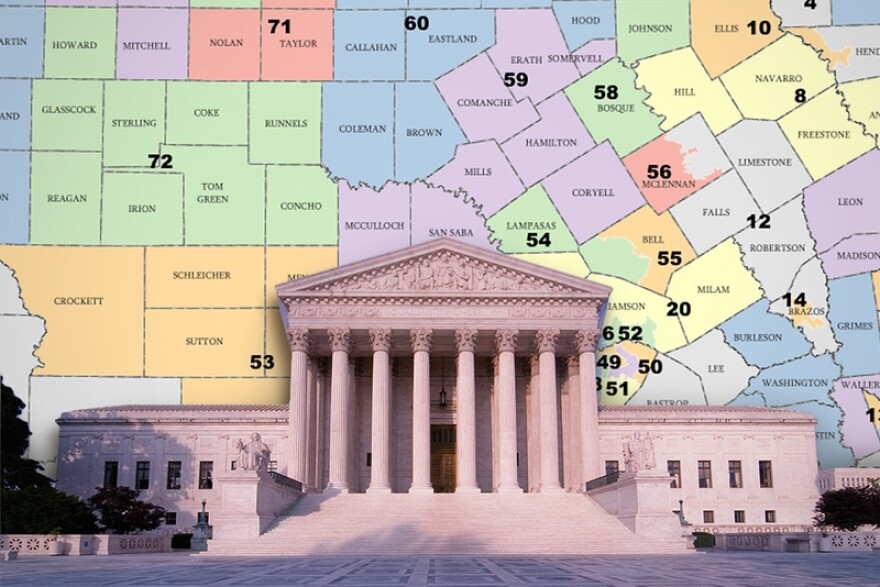From the Texas Tribune: In a unanimous decision released Monday, the U.S. Supreme Court ruled to uphold Texas' current system for drawing legislative districts so that they are roughly equal in population.
The Supreme Court's ruling is a victory for legislators — mostly Democrats — who represent districts with significant populations of people who are not eligible to vote: primarily children and non-U.S. citizens.
Last year, two Texas voters, Sue Evenwel of Mount Pleasant and Edward Pfenninger of Montgomery County north of Houston, brought a case to the Supreme Court arguing that Texas should divide its districts by the number of eligible voters, not by the total population. Evenwel and Pfenninger argued that the power of Pfenninger's vote was comparatively diminished because he had a greater proportion of non-voters in his districts.
The court pointed out that the difference in population between the biggest and smallest state Senate districts in Texas was less than 10 percent, while the difference between the eligible voters in the biggest and smallest districts was 40 percent. Evenwel argued that the disparity is untenable.
The justices did not say it would be unconstitutional to base district sizes on eligible voter populations, but said Texas’ method of dividing legislative districts by overall population is clearly the standard.
Although the 8–0 judgment was unanimous in Texas’ favor, the Court offered three separate justifications – the majority opinion, written by Justice Ruth Bader Ginsburg and joined by five other justices, as well as two concurring opinions written by Justice Clarence Thomas and Justice Samuel Alito.
In the ruling, Ginsburg focused heavily on U.S. history and longstanding practices allowing states to divide districts by total population.
“What constitutional history and our prior decisions strongly suggest, settled practice confirms,” Ginsburg wrote. “Adopting voter-eligible apportionment as constitutional command would upset a well-functioning approach to districting that all 50 states and countless local jurisdictions have followed for decades, even centuries.”
The opinion went as far back as to quote founding father Alexander Hamilton: “There can be no truer principle than this – that every individual of the community at large has an equal right to the protection of government,” it read.
The case brought together dozens of state legislators who signed on to briefs arguing in Texas’ favor. Members of the House of Representatives’ Mexican American Legislative Caucus and the Texas Senate Hispanic Caucus argued that the legal challenge represented a direct attack on their constituents, many of whom are ineligible to vote because they do not hold citizenship status. In order to accommodate thousands of additional eligible voters necessary to achieve district parity under Evenwel and Pfenninger’s plan, their districts would soar in size so much that their ability to represent their constituents effectively would be diminished, they said.
The Supreme Court acknowledged that argument in the majority ruling.
“As the Framers of the Constitution and the Fourteenth Amendment comprehended, representatives serve all residents, not just those eligible or registered to vote,” Ginsburg wrote. “Nonvoters have an important stake in many policy debates — children, their parents, even their grandparents, for example, have a stake in a strong public education — and in receiving constituent services, such as help navigating public-benefits bureaucracies.”
“By ensuring that each representative is subject to requests and suggestions from the same number of constituents, total population apportionment promotes equitable and effective representation,” the ruling concluded.




